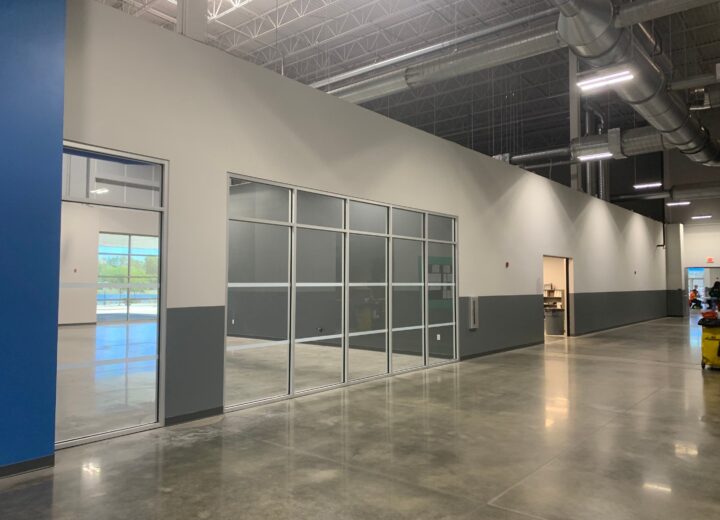
If you are fortunate enough to live or work in an area near the coastline, then you probably know that you have to always be on the lookout for damage to your structures. It can be a daunting task to make sure that the salt air and water doesn’t corrode your commercial building, thus raising the cost of upkeep.
One way to make sure that corrosion does not have a chance to set in, is by starting off with the correct coating. If you are already experiencing a problem with corrosion, you are more than likely looking for the proper coating to help rectify the problem.
Types of Epoxy Coatings
There are several different types of Epoxy coatings, each with their own strengths. These include:
Amidoamine – Exceptional for adhesion, surface wetting, and water resistance. This coating has a low viscosity rating and holds gloss well.
- Used On: Barriers, bridges, common industrial projects, power plants, refineries and anywhere chemical or vapor resistance is necessary.
Anime – Exceptional for resistance against alkali, solvents, water, acid, corrosion, and abrasion. Also used as a chemical and vapor barrier.
- Used For: Barriers, bridges, offshore edifices, chemical and structural steel areas, storage tanks and linings.
Coal Tar – Covers in one thick coating at an inexpensive price. Extremely resistant to water, salt, and cathodic disbondment.
- Used For: Offshore structures, chemical plants, and paper mills. Also used for lining sewage treatment and non-potable water tanks, dam gates and penstocks.
Esters – Easy to apply, durable, and has the ability to work in low temperatures. Esters do not take a lot of surface preparation. They have excellent vapor resistance and an elevated alkali resistance over alkyds.
- Used For: Excellent to use when low temperatures or odors are an issue for your project.
Phenolics/Novolacs – Exceptionally resistant to chemicals, abrasions, and solvents. Also resistant to corrosion and extreme heat.
- Used For: Linings, refineries, bridges, power plants, and common industrial projects. Also works well against severe chemical surfaces.
Polyamide – Provides effective adhesion while being easily applicable due to its flexibility. Can endure weathering against the likes of alkali, water or acid.
- Used For: Bridges and other offshore construction. Also used for various types of plants such as; water, water submersion, wastewater and power plants. There is a myriad of other uses for Polyamide. For example, structural steel and storage tanks.
Siloxane – Maintains good weathering while keeping its color and gloss finish. Has hard abrasion and acid resistance with a minimal drying time
- Used For: Bridges, hospitals, jails, kennels, and schools. It is impervious to staining since it is a performance surface coating. It is also used in marine projects, as it’s resistant to excessive moisture.
Water-Based – This type advances conventional methods to a high-performance level. It adheres well, can endure weathering, and is chemical and solvent resilient. This coating cleans with water and produces only a faint odor.
- Used For: Food factories, hallways, hospitals, kitchens, nursing homes, offices and industrial spaces.
Frequent Issues:
Each type of epoxy has its issues. The list below illustrates the most common problems that painters encounter with epoxy coatings. They include:
- Alligatoring
- Bleeding
- Blushing
- Color Variation
- Cracking
- Cratering
- Discoloration or Yellowing
- Exotherm
- Lifting or Wrinkling
- Low Film Thickness
- Pinholing
- Poor Intercoat Adhesion
- Sagging
- Soft Film
- Tacky Film/Slow Dry Time
- Uneven Gloss
Knowing the surface that you need to cover in a salt air environment will help you decide what epoxy coating will need to be used. Materials such as concrete, lumber, masonry and structural steel all have different surfaces that require different paints and coatings to help the seal to withstand the continued exposure to salt air.
Understand that you might need more than one type of epoxy due to different kinds of materials within or around your structure. If the surface you are planning to coat is also exposed to salt water, you will need to take more preemptive measures to obtain a strong enough layer for it to counteract the constant exposure. Once you are armed with the right kind of coating needed for your project, you will be able to help protect it from the harsh coastal environment.
Remember that if you are dealing with a structure that already has corrosion damage, or that has an older coating, it may have to be cleaned or stripped. Otherwise, the new layers will not adhere properly.
If you are still not sure what type of coating you need for your structure, it is best to contact a professional that will be able to assess your needs or complete the job for you.






